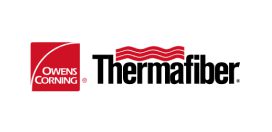The health and safety of building materials are a priority in industrial facilities—including insulation. In terms of insulation safety and health properties, not all types of insulation are equal.
Mold
For years, fibrous glass materials have been incorrectly cited for contributing to mold growth. The fact is, mold can grow in any environment where there’s moisture, a food source for mold spores and the appropriate temperature, so many organic materials can be food for mold. Fiberglass and mineral wool insulation are both inorganic, and therefore don’t feed mold growth. Furthermore, testing in accordance with UL1 and ASTM2 standards confirm that fiberglass insulation does not support mold growth.
Even though some products claim to be mold-resistant, mold can grow on ANY surface under the right conditions. In order to prevent microbial growth, moisture must be controlled.
Corrosion
Risk of corrosion to pipes, wires and fasteners is a factor to consider at all phases of commercial and industrial building.
- Fiberglass and mineral wool pipe insulation meets corrosion test requirements specified in ASTM material specifications. Properly installed vapor retarder systems greatly reduce the likelihood of corrosion.
Health Impacts
Not all insulation materials have undergone the same level of testing and scrutiny when it comes to health and safety.
- Fiberglass insulation
Fiberglass insulation is the most thoroughly tested insulation material available. The International Agency for Research on Cancer (IARC), the US National Toxicology Program (NTP) and the California Office of Environmental Health Hazard and Assessment have all stated that fiberglass and mineral wool thermal and acoustic insulations are not considered classifiable as carcinogens.
- Spray foam insulation
The National Institute for Occupational Safety and Health (NIOSH) has issued a warning on Diisocyanate exposure entitled, “Preventing Asthma and Death from Diisocyanate Exposure.” The safety of spray foam insulation is still being evaluated. According to the California Department of Toxic Substance Control, one of the main ingredients in spray foam, methylene diphenyl diisocyanate, could pose a number of health risks, including lung damage and asthma.
See More
–+Different spray foam manufacturers publish different guidelines for length of evacuation times during installation and curing. Note that there are no established evacuation timelines from any government agency.











